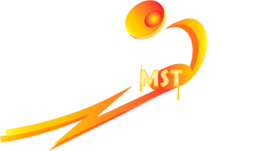My recent post on mindfulness is, by leaps and bounds, the most popular post I have published to date. I guess that should not come as a surprise given that mindfulness is a hot topic, not only in sport, but in psychology in general. While studying Sport Psychology, I read paper after paper indicating that mindfulness techniques were at least as effective as some of the more traditional CBT (cognitive behavioral theory) techniques that traditional mental skills are based on. Meditation is a very popular tool by those interested in applying techniques of mindfulness.
Just a few short years ago, I would not have even taking a second glance at articles related to meditation. It struck me as something that was a little “out there” for a typical recreational sport participant such as myself. But, the more I read white papers extolling the virtues of meditation and mindfulness, the more my interest was piqued. In parallel to my formal studies, I also took an interest in biofeedback techniques applicable to sport performance. That is when I ran across the Muse System.
Muse is basically an EEG (electroencephalogram) headband that reads the electrical signals in the brain, and provides biofeedback through their app to allow more constructive meditation sessions.
So what is a meditation session with Muse like? Let me describe it for you.
First, you position the headband on your forehead as shown below:

From the app, you select the background sound you would like to experience during your session. Of the ones available, I enjoy the rainforest, campfire, and beach options the best. You also pick the duration (I like 10 minutes, but have done as little as 7 minutes, and as much as 40 minutes at a time – and yes, the 40 minutes was a long time for me to sit still!), and the exercise you want to do from a menu – I like just counting my breaths from 1 to 10, and then starting over until the session is over.
You then start the session. A brief calibration is completed first to verify the signal quality is good. During this time, you just take a deep breathe and close your eyes. In a matter of moments, you are ready to go. Once you start the session, you simply sit in a comfortable position, close your eyes, and focus on your breathing. The system detects three conditions:
Active – you are not focused on your breathing – your mind is wandering
Neutral – less wandering – but still not entirely focused
Calm – very focused
If you are distracted from focusing on your breathing, the background sounds will intensify as a gentle reminder to bring your focus back to your breathing. As you enter a calm state, you will be visited by chirping birdies! But, be careful, if you focus on the birds, they will fly away!
When your preset time is over, you hear a chime and a few congratulatory words! You can then check your data. Here is a screen shot showing the results from a typical session:

As you can see, you get a summary of the time you spent in Active, Neutral, and Calm states as well as a graph showing the state changes over time. Below that, you are awarded points for the session, and can see how many times you were able to redirect yourself from an Active state to a neutral state, as well as how many birdies visited you during your extended calm times.
On the main screen, you can see a summary of all of your sessions showing your historical trends of calm time as well as total minutes in meditation, number of recoveries, points, total birds, progress against weekly goals, challenges and milestones.


How does this apply to sport performance? Well, most sport performance requires periods of intense focus. In sporting clays, you need to be able to concentrate on planning and execution from the time you arrive to a new shooting field until you finish your last target at that stand. During a shot, you need to be able to really focus on the target to the exclusion of everything else. Meditation trains you to maintain focus, and helps you to learn how to bring your focus back when you are distracted. That is a lesson I really need!
What is the benefit of the Muse System? I really like the biofeedback features of working with the Muse system. Sure, you can learn to meditate without the EEG feedback, but I like knowing how I am doing and being able to quantitatively see my improvement. Additionally, the app provides challenges along the way to keep you motivated and interested in daily practice. I have been using the system daily for 73 days now. At first, it was more of a curiosity for me, but now, I am really starting to see the benefits of focus training and am actually enjoying the sessions a lot! It is nice to take 10 minutes out of my work day and have some time to myself to relax and practice my ability to focus. I must admit, sometimes I find it so relaxing, that more than once, I have drifted off to sleep during a session!
How Can I learn more about the Muse System? Visit their website:
If you use meditation to improve you sport performance, please drop me an email and let me know how it is worked for you!
